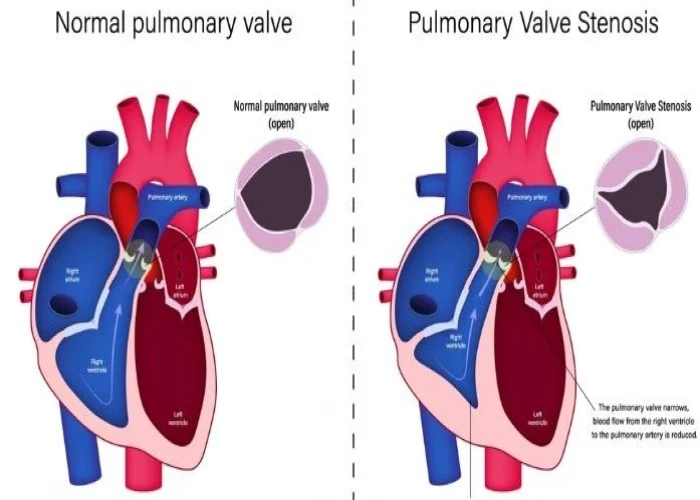 Welcome
Welcome
“May all be happy, may all be healed, may all be at peace and may no one ever suffer."
Pulmonary valve disease

Pulmonary valve disease is a condition that affects the valve that controls blood flow from the right ventricle of the heart to the lungs. The pulmonary valve is responsible for opening to allow blood to flow from the heart to the lungs to receive oxygen, and then closing to prevent blood from flowing back into the heart. When this valve is not working properly, it can cause a range of symptoms and complications.
There are several different types of pulmonary valve disease, including:
- Pulmonary valve stenosis: a narrowing of the valve that restricts blood flow to the lungs
- Pulmonary valve regurgitation: when the valve does not close properly, allowing blood to leak back into the heart
- Pulmonary atresia: when the valve is completely blocked, preventing blood from flowing to the lungs
Symptoms of pulmonary valve disease may include shortness of breath, fatigue, chest pain, and fainting or dizziness. In severe cases, the condition can lead to heart failure.
Treatment for pulmonary valve disease may involve medications to manage symptoms and slow the progression of the disease, as well as surgery or other procedures to repair or replace the valve. In some cases, a minimally invasive approach may be used, such as a catheter-based procedure to insert a device to help the valve function properly. With proper treatment, many people with pulmonary valve disease are able to manage their symptoms and lead active, healthy lives.
Research Papers
Disease Signs and Symptoms
- Heart disease
- Heart valve problems
Disease Causes
Disease Prevents
Disease Treatments
Disease Diagnoses
Disease Allopathic Generics
Disease Ayurvedic Generics
Disease Homeopathic Generics
Disease yoga
Pulmonary valve disease and Learn More about Diseases

Ascites

Osteomyelitis

Albinism

Hypereosinophilic syndrome

Benign paroxysmal positional vertigo (BPPV)

Congenital heart defects in children

Pityriasis rosea

Klinefelter syndrome
pulmonary valve disease, ফুসফুসের ভালভ রোগ
To be happy, beautiful, healthy, wealthy, hale and long-lived stay with DM3S.
